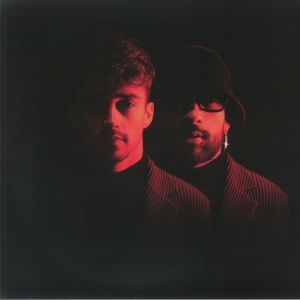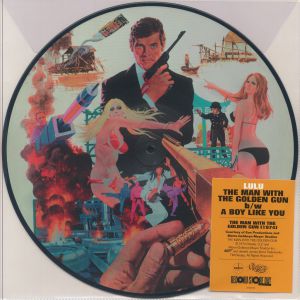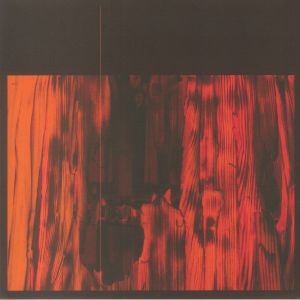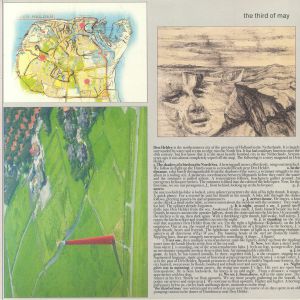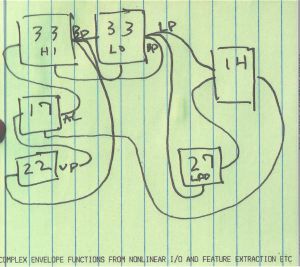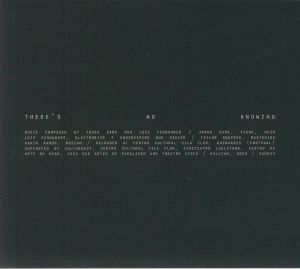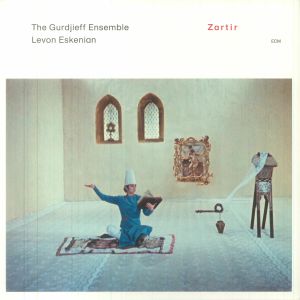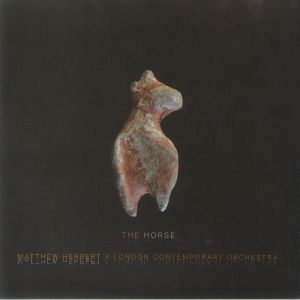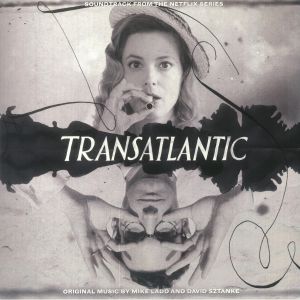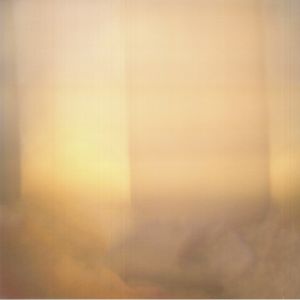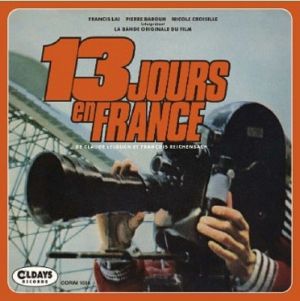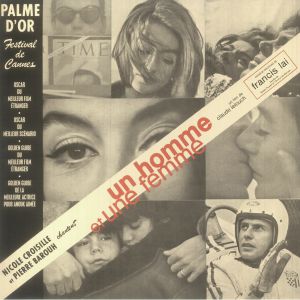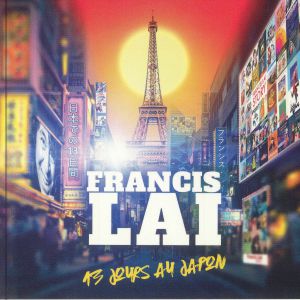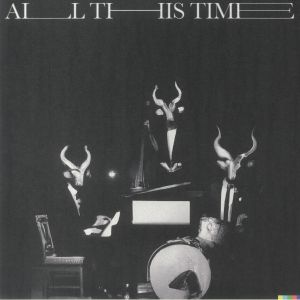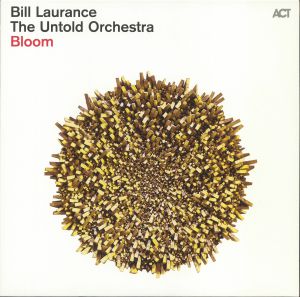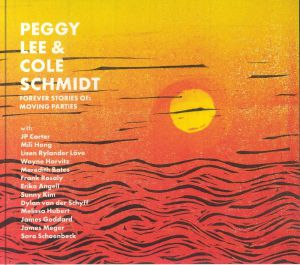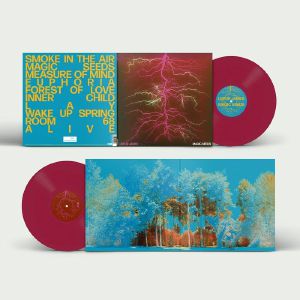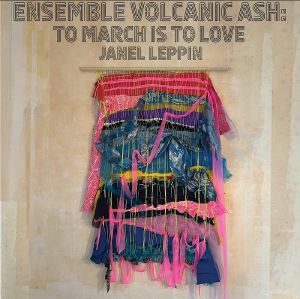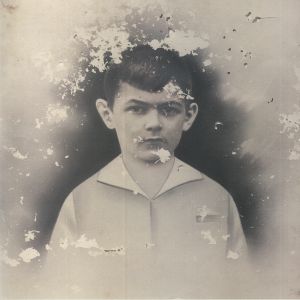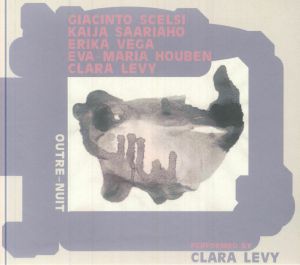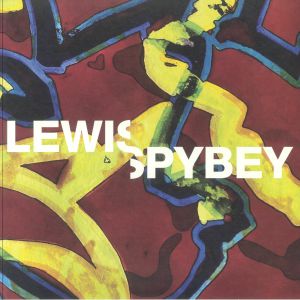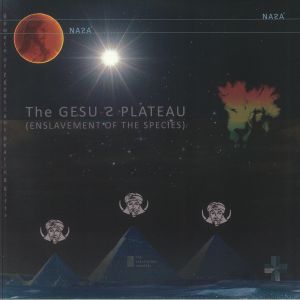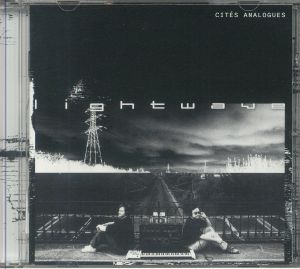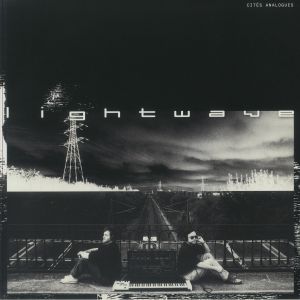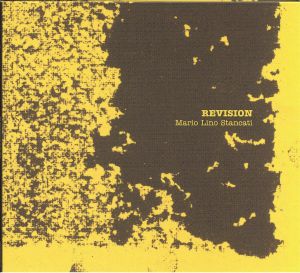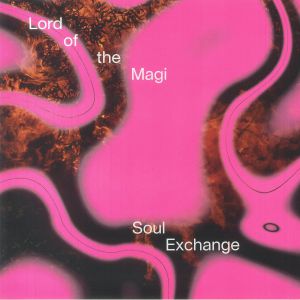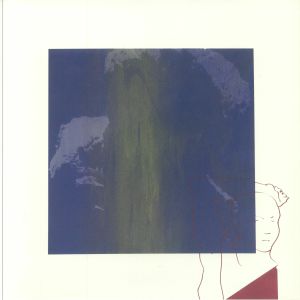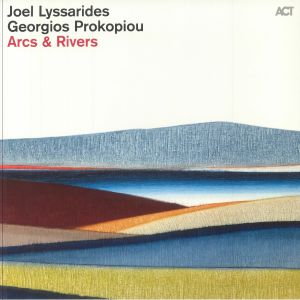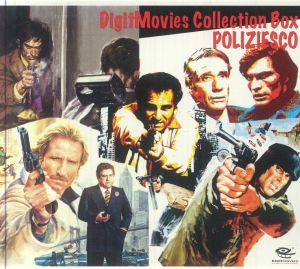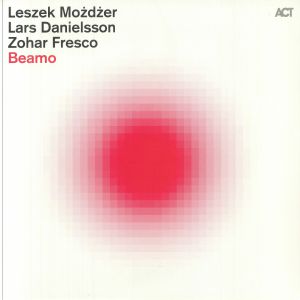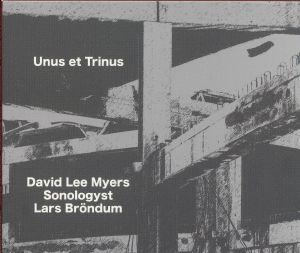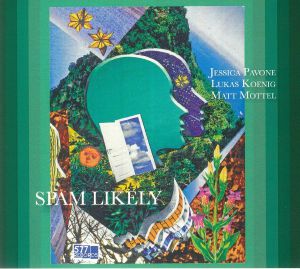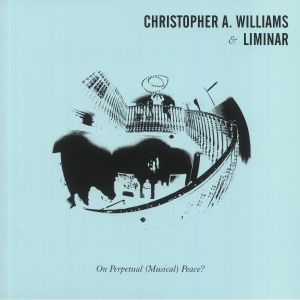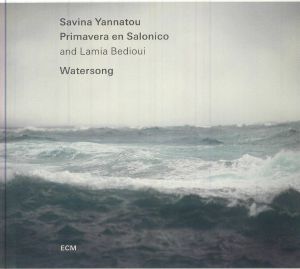Filter
Genre
Stock
Artist
Featured
Release Title
Price
Tags
Back catalogue: Classical
Juno's full catalogue of Classical
Singles
Review: In an unprecedented collaboration, Formula 1 star Charles Leclerc and world-renowned pianist Sofiane Pamart present Dreamers, a unique piano composition project. An unusual project to say the least, we have to admit that the idea is there: co-composed between the boy racer and the pianoforte prodigy, Leclerc and Pamart jointly describe their release as a "tribute to the journey and not just the destination", and a composition that "captures the ongoing pursuit of excellence and the never-ending evolution of dreams". It certainly is dreamy, with the likes of 'Focus' and 'The Dream Continues' wringing out the stargazing propensities of all those at home and mixing it with the raw power of the figurative racecar engine, inspiring a longing for greatness on the level embodied in these two.
… Read more in stock $27.71
James Bond: The Man With The Golden Gun (Record Store Day RSD 2024) (12" picture disc)
Cat: DEMREC 1192. Rel: 09 May 24
Gespielt von: Juno Recommends Leftfield, Juno Recommends Experimental
in stock $26.89
Alben
The Concert (limited 1-sided LP)
Cat: SP 143. Rel: 17 Apr 23
in stock $24.12
Review: Den Helder is the northernmost city in Holland, is surrounded by water and borders the North Sea. With a military history dating back to the 16th century, it is also the most bombed city in the Netherlands and was nearly destroyed during World War II. The Third of May was written and recorded in 2020 over six days in an old pumping station located in the dunes of Huisduinen near Den Helder. The story behind the album is set in this historic city, weaving its tumultuous past into a vivid, imagined narrative inspired by the area's rich and tragic history. It's as much of an emotional rollercoaster as you would expect given the concept.
… Read more in stock $24.94
Cat: IT 033. Rel: 20 May 24
in stock $14.14
There's No Knowing (CD limited to 300 copies)
Cat: ZAM 023CD. Rel: 09 Feb 22
in stock $11.13
Review: The third album from Levon Eskenian's remarkable ensemble is its most adventurous to date. As well as reclaiming the music of esoteric teacher G. I. Gurdjieff for folk instrumentation, Zartir situates Gurdjieff in a tradition of Armenian bards and troubadours including Ashugh Jivani, Baghdasar Tbir and the legendary Sayat-Nova. In parallel, an emphasis on pieces for sacred dance reaches its apex in The Great Prayer, an entrancing collaboration between the Gurdjieff Ensemble and the National Chamber Choir of Armenia, which draws upon ritual music of multiple faiths. Arranger Eskenian says, "I believe The Great Prayer is more than a mere 'composition'. It is one of the most profound and transformative pieces I have encountered in Gurdjieff's work." Zartir was recorded in Yerevan in 2021 and mixed and completed in Munich in November 2022 by Levon Eskenian, Tigran Kuzikyan, and Manfred Eicher.
… Read more in stock $28.55
in stock $35.76
The Horse (limited gatefold bone vinyl 2xLP (indie exclusive))
Cat: 405053 8899863. Rel: 30 May 23
Review: We all know that Matthew Herbert is a far out sonic experimenter who will look to make music with and from anything. But this project might be his most outlandish and extraordinary to date. It starts with him looking for the largest possible animal skeleton to explore though music. He settled on a full size horse and from that made flutes from its thigh bones and bows from ribs and hair. Gut strings stretched over the pelvis feature in the mid-section and even more bizarre than that is the fact he travelled to ancient cave paintings of horses in Northern Spain to record reverb at their door. Brilliantly bonkers as ever.
… Read more in stock $42.12
Zero 999 (silver vinyl LP + MP3 download code in die-cut sleeve limited to 200 copies)
Cat: OOH 42. Rel: 24 Apr 25
in stock $23.27
Transatlantic (Soundtrack) (LP in spot-varnished sleeve)
Cat: 814734 7502. Rel: 28 Sep 23
in stock $26.59
in stock $31.59
in stock $19.94
Cat: PL 2312529LP. Rel: 23 Nov 23
Review: Reissued and remastered for the first time, with its original tracklist and cover, Francis Lai's eerie-romantic soundtrack for A Man And A Woman, directed by Claude Lelouch, matches the film's subject. That is, two widowers meet for the first time at their children's school, and find themselves plagued by haunting visions and flashbacks of their former spouses. Netting the Palme d'Or at Cannes in 1966, the film has gone on to set the benchmark for French romantic soundtracks, a mark set by the score's rose-tinted sonic scenery, diegesis-breaking narrations and almost automatic singing.
… Read more in stock $25.78
The Best Of His Works (Soundtrack) (CD with obi-strip)
Cat: WKTC 1001. Rel: 31 Jan 24
in stock $37.42
in stock $21.62
in stock $24.66
Magister Perotinus Meets The Jedi Masters (LP + insert + MP3 download code)
Cat: BS 084. Rel: 18 Jul 24
in stock $24.66
The Disney Book (gatefold 180 gram red vinyl 2xLP)
Cat: B 003612201. Rel: 01 Jan 90
in stock $31.87
Kaleidoskop (gatefold heavyweight vinyl 2xLP + booklet)
Cat: NLP 4268. Rel: 20 Dec 23
in stock $54.87
Bloom (180 gram vinyl LP + MP3 download code)
Cat: ACTLP 90591. Rel: 02 May 24
Review: Bill Laurance's Bloom marks a grand transition from intimate duo collaborations to a widescreen orchestral spectacle. Teaming up with Manchester's Untold Orchestra, Laurance delivers a riveting fusion of classical sensibilities, jazz improvisation, and pop grooves. The eponymous opener features dark string chords expanding into a rhythmic journey with piano melodies and hypnotic improvisation. Inspired by his child's imaginative capacity, Laurance crafts a sonic landscape that evokes Baroque, Vivaldi, and modern influences, all while maintaining a sense of wonder and exploration. The Untold Orchestra shines in their tightness and sensitivity, elevating Laurance's compositions to cinematic heights. With Bloom, Laurance strikes a delicate balance between technical mastery and emotive storytelling, creating a stunning listening experience that invites listeners to lose themselves in its dreamlike realms.
… Read more in stock $24.66
in stock $29.15
Sifu (Soundtrack) (gatefold black & translucent red vinyl 2xLP)
Cat: 502454 5973112. Rel: 28 Sep 23
in stock $68.18
Peggy LEE / COLE SCHMIDT / VARIOUS
Cat: EAR 098. Rel: 21 Nov 24
in stock $13.02
Magic Seed (limited numbered gatefold ruby red vinyl LP + booklet (indie exclusive))
Cat: ALNLP 73R. Rel: 17 Mar 25
in stock $38.79
Arrhythmian (gatefold 2xLP)
Cat: POL 012024. Rel: 20 May 24
in stock $43.22
Thawlines (180 gram vinyl LP + MP3 download code)
Cat: DENLP 372. Rel: 01 Jun 23
in stock $26.33
Ensemble Volcanic Ash: To March Is To Love (limited LP + MP3 download code)
Cat: RUNE 529. Rel: 04 Jul 24
in stock $23.59
Gespielt von: Juno Recommends Experimental
in stock $20.79
Illusions & Realities (2xLP + insert with obi-strip)
Cat: GB 1572OBI. Rel: 27 Oct 22
in stock $28.27
Cat: SR 570CD. Rel: 14 Feb 25
in stock $13.29
Review: Klara Lewis' latest release is a poignant tribute to her late friend, mentor, and former label head, Peter Rehberg. The EP opens with 'Thankful,' a track that directly acknowledges Rehberg's influential work under his PITA moniker, specifically the iconic 'Track 3'. This original piece has profoundly shaped the experimental electronic landscape, its influence still resonating across contemporary electronic music. Lewis' rendition offers a heartfelt homage with a cascading melody that transitions into an immersive digital landscape, evoking both reverence and a sense of finality. The track's abrupt ending mirrors the suddenness of Rehberg's passing, enhancing its emotional depth. Having first emerged with Ett on Editions Mego at 21, Lewis, now 31, presents Thankful as a mature and emotional milestone in her career. 'Ukulele 1' stands as another intimate tribute, featuring the titular instrument looping gently and capturing the essence of its recording environment. This track emphasises the human touch amidst an era increasingly dominated by mechanical precision. 'Top,' named after one of Rehberg's favourite expressions, offers a brief but intense burst of mutant acid techno, capturing the essence of Rehberg's eclectic taste. Following this is '4U,' a track that forgoes words for pure sonic expression, reflecting Rehberg's influence in its profound simplicity. The EP concludes with 'Ukulele 2,' which revisits the themes of 'Thankful,' reinterpreting the earlier melody with digital flourishes. Thankful stands as a meticulously crafted tribute, embodying the spirit and innovation of Peter Rehberg and the original MEGO label.
… Read moreGespielt von: Juno Recommends Ambient/Drone
in stock $30.49
Lewispybey (lime marbled vinyl LP)
Cat: UPP 004. Rel: 07 Nov 24
Review: Edvard Graham Lewis and Mark Spybey's collaboration fuses electronic rhythms, layered field recordings and ambient soundscapes into an album with striking depth and cohesion. Both artists bring decades of experienceiLewis from Wire, Dome, He Said and Spybey from Zoviet France and Dead Voices on Air. This project, however, ventures into fresh territory, blending experimental sounds with surprising grooves and sly hooks. Crafted remotely, each track unfolds a textured sonic landscape, offering listeners a unique glimpse into the creative synergy between two pioneers of boundary-pushing music.
… Read more in stock $22.16
Cat: LSD 043. Rel: 21 Jan 25
Review: Sound collage is a genre where ideas and sounds can get a blank canvas to express those ideas and not have any pressures to create full songs. The Gesua Plateau: Enslavement Of The Species pushes the boundaries of experimental and electronic music to an exciting place. This multi-sided album dives into ambient textures, unusual sonic landscapes and evocative soundscapes that feel alien and oddly familiar. Side-1 serves as an entry point, with five shorter tracks showcasing ambient and experimental ingenuity. Highlights include 'Track 2', where a blend of saxophone, electronics and effects evokes a chamber-like resonance and 'Track 4', featuring a dark, sequenced rhythm that feels futuristic and thrilling. 'Track 3' introduces nature sounds, adding an organic touch to the experimental palette, while 'Track 5' leans into spacey electronics that expand the album's ethereal tone. Side-2 delivers 'Track 6', a cavernous exploration of dissonance and sound processing that feels otherworldly. Side-3 offers 'Track 7', an industrial, mechanical piece that's haunting and deeply atmospheric. Finally, Side-4 ventures even further into the unknown, presenting soundscapes that feel unmoored from terrestrial reality. A profound journey into sonic experimentation. If you're interested in the avant garde, musique concrete or experimental sounds, this ambient album has all that and then some.
… Read more in stock $39.08
in stock $16.62
in stock $23.00
Revision (CD limited to 200 copies)
Cat: USG 090. Rel: 02 Apr 24
in stock $14.97
in stock $28.27
in stock $26.59
in stock $21.90
Digitmovies Collection Box Poliziesco (5xCD box set (no sound files available))
Cat: SPDM 024. Rel: 19 Dec 24
Da Corleone A Brooklyn (CD 1)
La Polizia Accusa: Il Servizio Segretouccide (CD 2)
La Banoa Del Gobbo (CD 3)
Camorra (CD 4)
Genova A Mano Armata (CD 5)
in stock $51.83
Beamo (gatefold 180 gram vinyl 2xLP + MP3 download code)
Cat: ACTLP 90651. Rel: 27 Mar 25
in stock $27.99
Unus et Trinus (CD)
Cat: USG 092. Rel: 02 Apr 24
in stock $13.86
in stock $20.51
On Perpetual Musical Peace? (blue vinyl LP limited to 300 copies)
Cat: 92307. Rel: 09 Jun 21
in stock $26.05
Watersong (CD)
Cat: 753429 5. Rel: 08 Apr 25
in stock $15.51

 USD
USD





